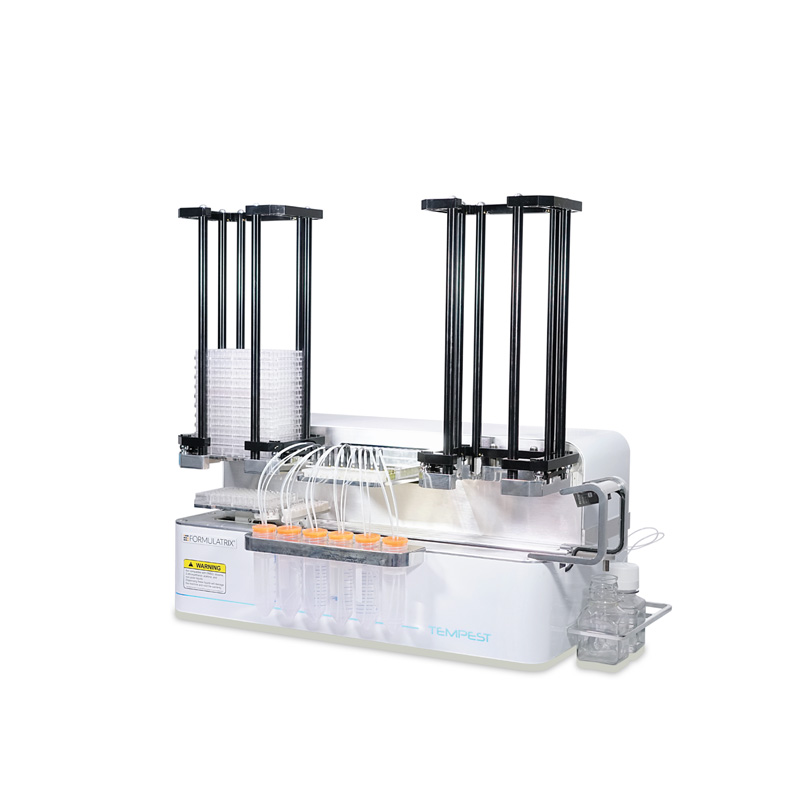Introduction:
Industry academic partnerships have enabled more targeted and cost-effective drug discovery approaches. With this high degree of collaboration, academic institutes throughout the world have gained access to compound libraries containing hundreds of thousands of compounds. Limited budgets and highly variable projects drive the need for cost-effective and easy-to-use tools to facilitate efficient assay development and screening. Furthermore, these projects need to be run to industry standard, and therefore automation of high throughput screens needs to be reproducible to maintain the feasibility of this drug discovery process
This application note highlights the use of the TEMPEST® Liquid Dispenser, a versatile microfluidic reagent dispenser designed to execute assay development and high-throughput screens in miniaturized assay volumes, driving down the cost of assay reagents by 60% while generating high-quality screening data.

